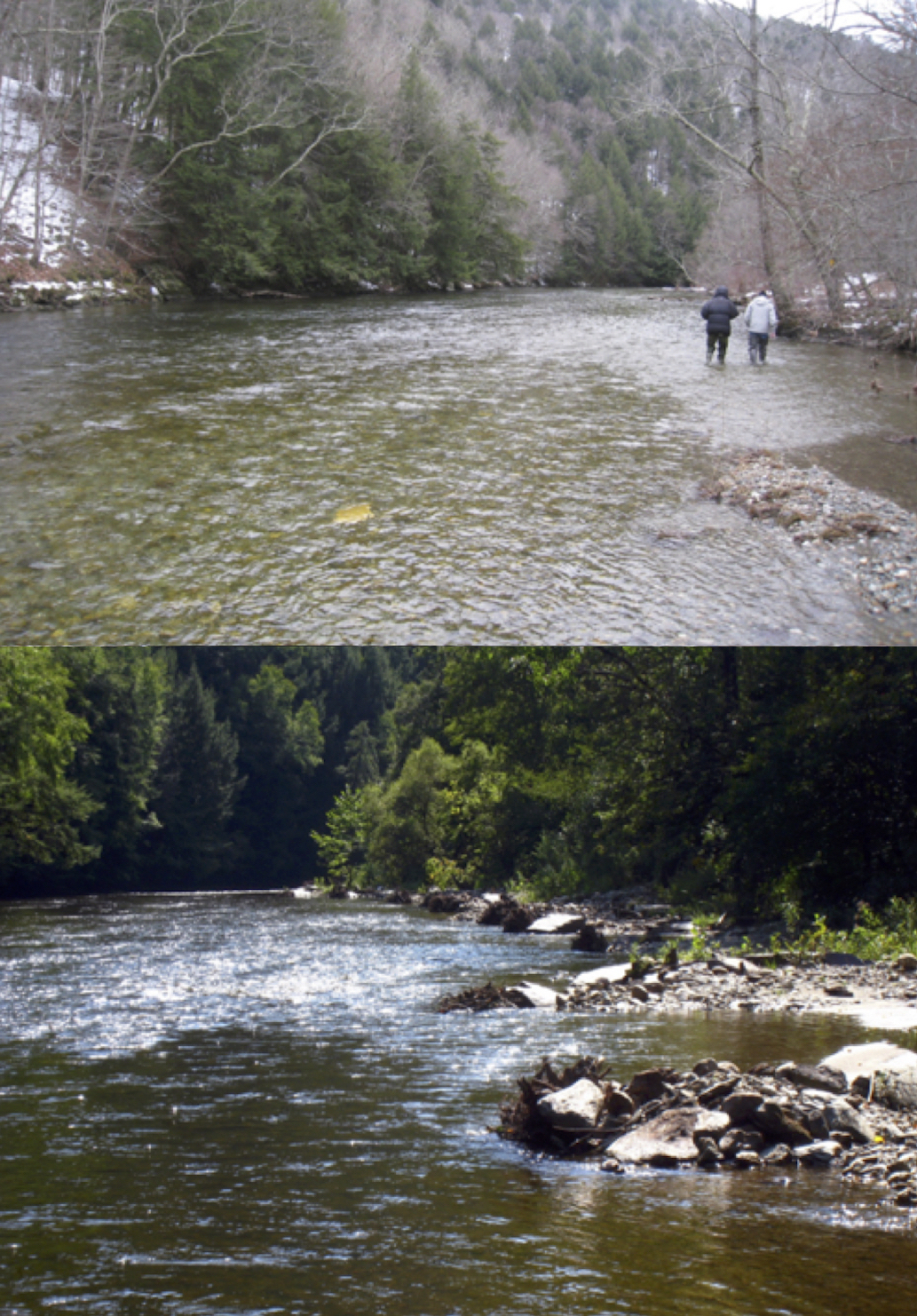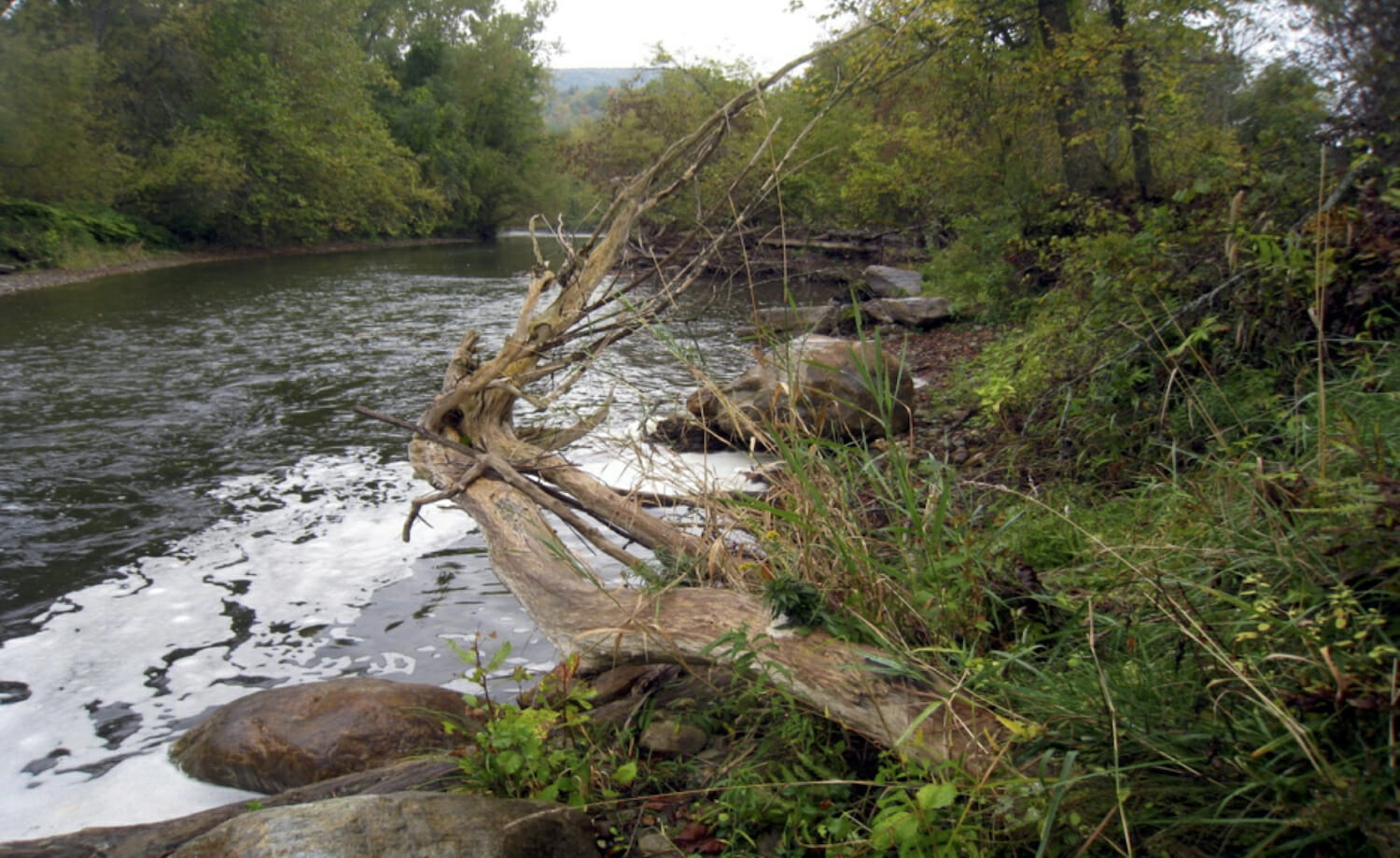Adding large wood to streams can help narrow over-widened channels and also provide a place for trout to hide from predators such as mergansers, which have been found to be decimating trout of certain sizes in the Battenkill.
By John Braico
The storied Battenkill, long recognized as a challenging river among anglers, faced a steep decline by 1990, yet work over the past 15 years has spurred its recovery.
Trout Unlimited volunteers have been been helping with that effort.
By 2000, biologists had conducted studies in Vermont that found good natural reproduction of trout, and a scattering of large wild trout, but a near absence of intermediate size classes. The same results were seen in New York.
This gap was recognized as a symptom of heavy merganser predation of trout in the missing size classes due to a severe deficiency of large wood that normally provides essential shelter. Without cover, young trout were exploited by an exploding population of mergansers.
In Vermont, state and national forest fisheries biologists reintroduced anchored collections of large wood to provide cover and shelter along both banks to protect and nurture all year classes. As a result there has been a sustained fivefold increase in wild trout populations across all year classes — including a robust population of trout exceeding 18 inches.
In New York, the Clearwater and Adirondack Chapters of TU worked with theU.S. Fish and Wildlife Service and the Battenkill Watershed Alliance (BKWA) on two problems: insufficient large wood and an overwide channel with impaired sediment transport.
Large wood was used on nine projects narrow the channel and simultaneously improve trout habitat.
While this remains an outstanding success and a delight to anglers in both states, it is also appropriate to acknowledge its limitations, namely that restoring nine high-quality half-mile segments in each state out of a total of 57 river miles, indicates there is much more to be done.
Moreover, the cumulative miles of the Battenkill’s impacted wild brook trout tributaries may actually exceed 57 river miles.
Members of the Adirondack, Clearwater and Southwestern Vermont TU chapters took up this challenge as they began conferring with agency partners and TU’s Eastern Conservation VP Keith Curley in late 2017 about launching a two-state Battenkill Home Rivers Initiative to address needs of the 400-square-mile watershed.

This before/after series shows how adding wood structures improves habitat in the Battenkill.
This comprehensive, landscape-based approach will require eliminating barriers to fish passage in tributaries, reconnecting reaches to sufficient floodplains, ensuring well canopied stream corridors and restoring ample habitat with large wood.
It’s a huge task, requiring raising $168,000 to fund the initial two years of a TU HRI coordinator along with seeking an ongoing funding sources for what is likely to become a 15-plus-year undertaking.
Thus far, $40,000 has been committed. The three chapters and the BKWA are now meeting regularly to mount a full scale funding campaign to meet this challenge.
Meanwhile, both New York chapters remain engaged in restoration work on the lower river with a two-year project that will add large wood and rock to stabilize an eroding high bank and provide habitat.
This TU chapter/BKWA/USFW project is funded by the New York chapters, anEmbrace a Stream grant from TU and other sources.
Both chapters are also jointly working on other efforts, including: monitoring river and tributary temps; evaluating the health of the tributaries; and using New York’s Trees for Tribs program as a start to restoring riparian canopy.
John Braico is the resource VP of the New York State council and a member of the Adirondack chapter. He is a coordinator of TU volunteer effforts in New York, along with Greg Cuda, president of the Clearwater TU chapter.



